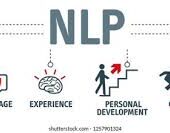Prompt Decorators: A Structured Approach to Enhancing AI Responses
Artificial intelligence has transformed how we interact with technology, offering powerful capabilities in content generation, research, and problem-solving. However, the quality of AI responses often hinges on how effectively users craft their prompts. Many encounter challenges such as vague answers, inconsistent outputs, and the need for repetitive refinement.
Prompt Decorators provide a solution—structured prefixes that guide AI models to generate clearer, more logical, and better-organized responses. Inspired by Python decorators, this method standardizes prompt engineering, making AI interactions more efficient and reliable.
The Challenge of AI Prompting
While AI models like ChatGPT excel at generating human-like text, their outputs can vary widely based on prompt phrasing. Common issues include:
- Ambiguity: Unclear prompts lead to unpredictable responses.
- Over-engineering: Excessively detailed prompts don’t always improve results.
- Inconsistency: Minor wording changes can drastically alter outputs.
Without a systematic approach, users waste time fine-tuning prompts instead of getting useful answers.
What Are Prompt Decorators?
Prompt Decorators are simple prefixes added to prompts to modify AI behavior. They enforce structured reasoning, improve accuracy, and customize responses.
Example Without a Decorator:
“Suggest a name for an AI YouTube channel.”
→ The AI may return a basic list of names without justification.
Example With +++Reasoning Decorator:
“+++Reasoning Suggest a name for an AI YouTube channel.”
→ The AI first explains its naming criteria (e.g., clarity, memorability, relevance) before generating suggestions.
Key Prompt Decorators & Their Uses
| Decorator | Function | Example Use Case |
|---|---|---|
| +++Reasoning | Forces AI to explain logic before answering | “+++Reasoning What’s the best AI model for text generation?” |
| +++StepByStep | Breaks complex tasks into clear steps | “+++StepByStep How do I fine-tune an LLM?” |
| +++Debate | Presents pros and cons for balanced discussion | “+++Debate Is cryptocurrency a good investment?” |
| +++Critique | Evaluates strengths/weaknesses before suggesting improvements | “+++Critique Analyze the pros and cons of online education.” |
| +++Refine(N) | Iteratively improves responses (N = refinement rounds) | “+++Refine(3) Write a tagline for an AI startup.” |
| +++CiteSources | Includes references for claims | “+++CiteSources Who invented the printing press?” |
| +++FactCheck | Prioritizes verified information | “+++FactCheck What are the health benefits of coffee?” |
| +++OutputFormat(FMT) | Structures responses (JSON, Markdown, etc.) | “+++OutputFormat(JSON) List top AI trends in 2024.” |
| +++Tone(STYLE) | Adjusts response tone (formal, casual, etc.) | “+++Tone(Formal) Write an email requesting a deadline extension.” |
Why Use Prompt Decorators?
- Improved Clarity – Ensures well-structured, logical responses.
- Better Accuracy – Encourages fact-checking and citations.
- Efficiency – Reduces trial-and-error in prompt engineering.
- Customization – Tailors responses to specific needs (tone, format, depth).
Real-World Applications
- Marketing: +++Refine(3) helps generate polished taglines.
- Research: +++CiteSources ensures credible references.
- Development: +++OutputFormat(JSON) automates API-ready responses.
- Decision-Making: +++Debate provides balanced insights for leaders.
The Future of Prompt Decorators
As AI evolves, Prompt Decorators could:
- Become native in AI APIs (e.g., OpenAI, Anthropic).
- Standardize across platforms (like Markdown for text).
- Expand into industry-specific variants (e.g., +++LegalCheck for law).
Conclusion
Prompt Decorators offer a simple yet powerful way to enhance AI interactions. By integrating structured directives, users can achieve more reliable, insightful, and actionable outputs—reducing frustration and unlocking AI’s full potential.











